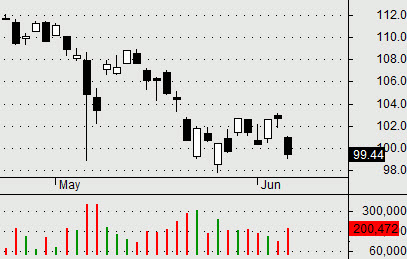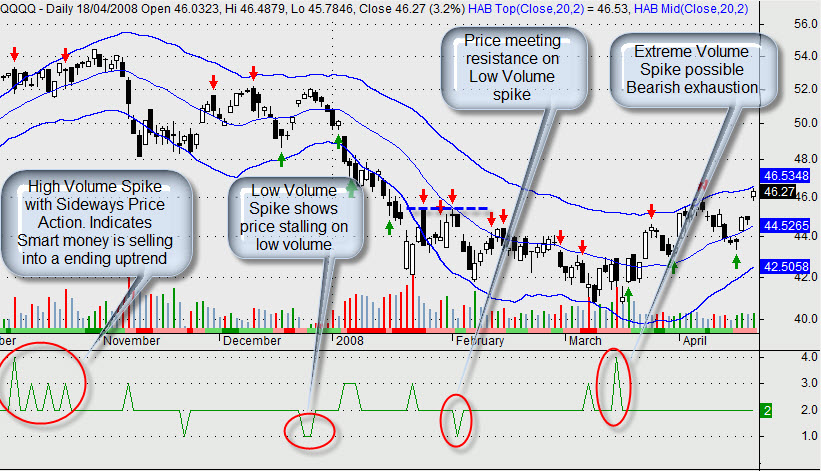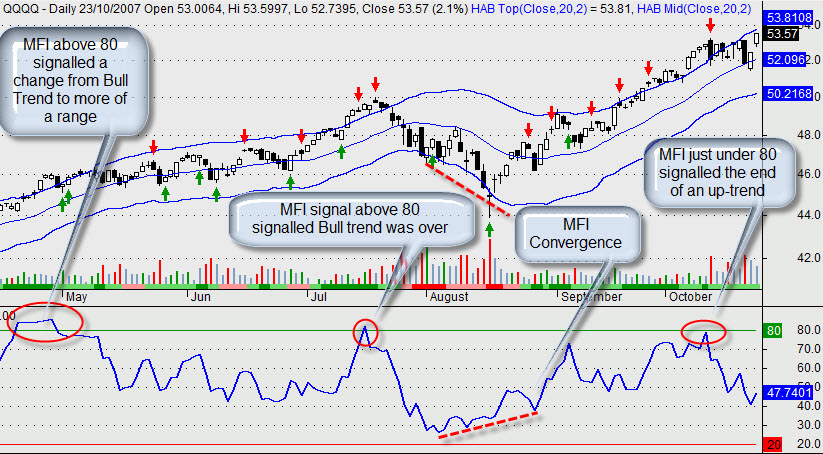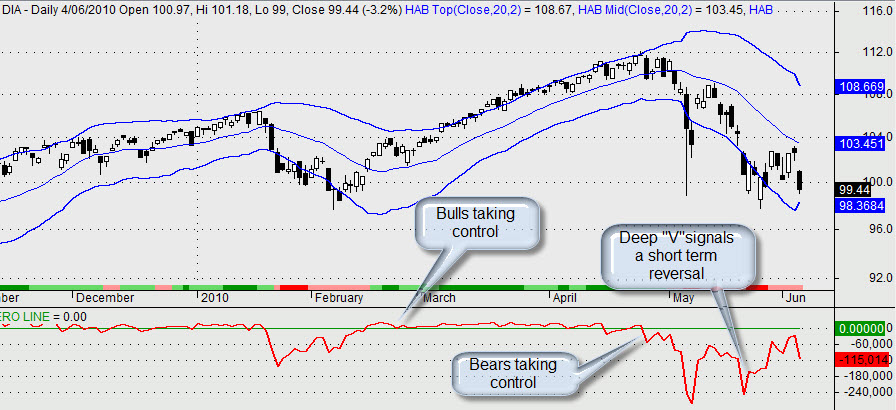If you already have a primary indicator or system which is going to form the basis of when and where you will enter and exit your Trade Positions, chances are your going to want some secondary indicators to help you filter out the good signal from the bad.
Trade Volume Indicators & Volume filters are a great secondary indicator to help you draw a line in the sand and say yes this stock fits the criteria that I want to trade.
So lets start at the beginning, what is Volume….
 Trading Volume is the number of Share, Contracts, or Bonds traded in a specified period for a particular security (eg. stock, index or exchange, etc)
Trading Volume is the number of Share, Contracts, or Bonds traded in a specified period for a particular security (eg. stock, index or exchange, etc)
Like price itself, Volume can also be monitored for Trend, Divergence/Convergence, Extreme Spikes, rate of change etc. Volume can even be compared to price itself
So I have included below my three favourite Volume Indicators.
Volume Indicators
Volume Spike
Measuring Volume High & Low Spikes can tell you plenty about the current and past price action.
Although there are a few variations of Volume Spike Indicators I have developed my own Volume Spike Indicator (Global Trend Traders proprietary indicator) to help filter the Volume noise and only show me when there are High or Low Spikes of each security as show below.

Money Flow Index
In simple terms the Money Flow Index is volume weighted variant of the Relative Strength Index.
The Money Flow index is a volume indicator which simply compares the traded value of the up-days to the traded value of down-days and puts it in a percentage value. (Traded Value = average price * volume)
It is commonly use to spot weakness in trend and price reversals using the default setting of 14 days.
- Typically readings above 80 signal a Market Top
- While readings below 20 signal a Market Bottom
- Divergence and Convergence can also be used to show price reversals

Force Index
The Force Index was created by Dr. Alexander Elder to measure the strength of the Bulls and Bears of the security.
The default setting for the Force Index is the 2 and 13 day EMA to help smooth the signal line which a basic of price movements and volume.
- Typically if the Force Index is above the Zero line the Bulls are in control,
- If it is below Zero the Bears are in control.
- The stronger the reading above or below Zero the more powerful the trend.
- If the Force Index flattens of it either means that a) volume is declining or b)large volumes are failing to move price higher. Either way a reversal normally follows.
- Deep “V” signals the end of a down trend, and usually a retest of the bottom is to follow

You can even include in your Trade Entry Scans a volume filter, so that it only show stocks that trade X amount of shares per day or greater, and thus filtering out lightly traded securities.
Summary
As you can see Volume Indicators can tell you a lot about the what the strength of a security is, and combined with price and other primary indicators can prove a powerful tool in your trading arsenal.
I hope you have found this article helpful. Stay tuned for next weeks post.
Cade Arnel
Trend Hunter
www.globaltrendtraders.com 2009-2010

Hi Cade,
Sounds like volume indicators can be a good measure of market sentiment (when combined with other indicators). There seem to be so many things to look at it’s almost analysis paralysis. I guess it must just take time to determine which ones to look at and which picture they are painting.
Hi David,
Yeah volume indicators are great when used in conjunction with your primary indicator. However you have raised a very good point, with looking at too many indicators and having analysis paralysis.
To keep it simple, I suggest defining exactly what condition you are looking for to give you signals, with preferably 1 primary signal indicator, and using a handful of secondary indicators either add weight or discount the signal.
That way your not trying to rationalize what one indicator says over another.
Hello Cade Amel,
I was wondering how these different indicators are calculated, I have searched around for a bit and I could not find what the calculation behind the Stock Spike indicator is. If you could please elaborate on this it would be wonderful! Thanks!